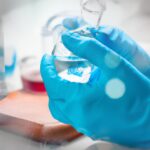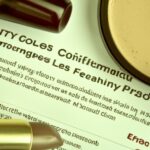Exploring the Rigorous Procedures of Cosmetic Products Testing for Effectiveness
The push for the world to look their best has increasingly seen more people gravitate towards cosmetic products. From complexion enhancers, to hair care and breath fresheners, cosmetics are now a basic necessity in most of our daily lives. As more and more cosmetics companies occupy the sector, the demand for higher-quality products has also gradually increased.
In this backdrop, cosmetic product testing for effectiveness is now of paramount importance in the quest to provide consumers with the best products in the market. This rigorous process is typically done to assess efficacy, safety, and stability of cosmetic ingredients, as well as consumer satisfaction with the finished product.
A Peek into the Purposes and Advantages of Cosmetic Testing
The process of cosmetic testing can be seen as a quality assurance exercise for the consumer. Its primary objective is to ensure that cosmetics products are safe for consumption as well as effective in actually delivering the desired results. Such testing is also done to assess the stability of the components of cosmetics and determine if the effects of the treatment remain the same over a set period of time.
Below are 7 key advantages of cosmetic testing
-
- It helps in the identification of any bacteria, viruses, or fungus in products.
-
- It helps to ensure compliance with government regulations, preventing product recall or other legal issues.
-
- It allows for the determination of shelf-life and expiration dates of cosmetics.
-
- It optimizes formulas and changes or updates in formulas.
-
- It helps to improve product packaging and the stability of the product.
-
- It helps to compare performance characteristics and competitive analysis.
-
- It allows for the assessment of irritants, soaps, and sunscreens for the skin.
The Types of Testing For Cosmetics and Their Targets
Testing for cosmetics can be broadly divided into two main groups, namely, product testing and market testing. The former is intended to assess the product’s effectiveness while the latter helps ascertain consumer perception of the product. Product testing usually consists of two distinct phases, which are pre-production and post-production testing.
The following are some of the more common tests aimed at cosmetics:
-
- Microbial Testing: This test is intended to detect the presence of dangerous microbes in products.
-
- Stability Testing: This test is carried out under various conditions to check the product’s compatibility, dispersibility, and chemical resistance.
-
- Packaging Testing: This test is aimed at determining the capacity in which the product can be stored and transported before usage.
-
- Claims Substantiation Testing: This test guarantees consumers that the product captures the intended effect in its stated application.
-
- Performance Testing: This test evaluates the performance of the cosmetic in terms of efficacy and safety.
-
- Consumer Evaluation Testing: This test determines the user-friendliness and acceptability of the cosmetic product.
The Quality Testing Standards Required For Certification
As it is with all products, certain quality testing standards need to be met before cosmetics can be brought to the market. This quality certification also ensures that a product is safe for use and its promised effects will be delivered.
The quality standard required for a cosmetic typically depend on the region in which the product will be sold. Generally, however, quality standards in the cosmetics industry usually include:
-
- Good manufacturing practice or Good Distribution Practice from the European Commission or Cosmetic GMP from FDA.
-
- ISO 22716
-
- Issuance of Cosmetic Notifications.
-
- Safety Assessments for the products.
-
- Registration of cosmetic manufacturing.etc
Most of these tests are aimed at ensuring the quality of cosmetics being produced to meet the expectations of consumers.
Frequently Asked Questions
Q. How important is Cosmetic testing?
A. It is very important in terms of efficacy, safety, and stability, as well as consumer satisfaction with the finished product.
Q. What is the purpose of Cosmetic testing?
A. The primary purpose is to ensure that cosmetics products are safe for consumption, as well as effective in delivering the desired results. Other purposes include testing for bacteria, viruses, or fungus; testing for shelf-life and expiration dates; as well as assessing the irritants, soaps, and sunscreens for the skin.
Q. What are the quality standards for cosmetics?
A. Typically, quality standards in the cosmetics industry include Good manufacturing practice or Good Distribution Practice from the European Commission or Cosmetic GMP from FDA; ISO 22716, issuance of Cosmetic Notifications, safety assessments for the products, and registration of cosmetic manufacturing.
Taking Quality Assurance of Cosmetic Products Seriously
In conclusion, it is evident that the process of cosmetics testing for effectiveness is an important aspect of the entire cosmetic production cycle. As previously mentioned, this testing helps to determine the efficacy, safety, and stability of cosmetics, as well as consumer satisfaction with the product.
As a premium Swiss cosmetics company, the process of quality assurance is taken very seriously in the bid to ensure the safety of users and the efficacy of our products. By adhering to the various quality testing standards outlined, we strive to continuously develop products that meet the highest expectations of our customers, with their safety and satisfaction at the core of our production processes.
Unveiling the Science Behind Effective Cosmetic Product Testing
Cosmetic products have become an integral part of our daily routines, allowing us to enhance our appearance and boost our confidence. However, ensuring the efficiency and safety of these products is crucial to provide consumers with the best options available. Cosmetic product testing plays a pivotal role in achieving this objective, employing rigorous procedures to evaluate efficacy, safety, stability, and consumer satisfaction. Let’s delve deeper into the purposes and advantages of cosmetic testing to understand its significance in the industry.
Unlocking the Benefits of Cosmetic Testing
Cosmetic testing serves as a comprehensive quality assurance exercise, guaranteeing that the products are not only safe for use but also capable of delivering the desired results. Let’s explore some key advantages of conducting thorough cosmetic testing:
1. Identification of Microbial Contamination: By subjecting cosmetic products to testing, any presence of harmful bacteria, viruses, or fungi can be detected, ensuring consumer safety.
2. Compliance with Government Regulations: Cosmetic testing helps manufacturers ensure compliance with strict regulations set by government authorities. This not only prevents product recalls but also safeguards against potential legal issues.
3. Determination of Shelf-Life and Expiration Dates: Testing facilitates the assessment of the shelf-life and expiration dates of cosmetics, enabling manufacturers to provide accurate information to consumers and maintain product integrity over time.
4. Optimization of Formulas: Through comprehensive testing, manufacturers can optimize their product formulas. This process involves making necessary changes or updates to enhance the overall effectiveness and safety of the cosmetics.
5. Improvements in Product Packaging and Stability: Cosmetic testing aids in improving product packaging by assessing its suitability for preserving the product’s quality. It ensures that the packaging maintains stability and prevents any adverse effects on the product during storage or transportation.
6. Performance Characteristics and Competitive Analysis: Testing allows manufacturers to compare the performance characteristics of their cosmetics with those of competitors. This analysis enables them to identify areas for improvement and stay ahead in the market.
7. Assessment of Skin Irritants, Soaps, and Sunscreens: Cosmetic testing includes evaluating the impact of products on the skin, specifically assessing irritants, soaps, and sunscreens. This assessment contributes to the development of skin-friendly and safe cosmetics.
Diverse Testing Types for Cosmetic Products
Cosmetic testing encompasses various types, each serving distinct purposes. Let’s take a closer look at some of the common testing methods employed in the industry:
1. Microbial Testing: This type of testing is crucial to identify and eliminate any harmful microbes present in cosmetic products, ensuring consumer safety.
2. Stability Testing: Manufacturers subject cosmetics to stability testing under different conditions to assess compatibility, dispersibility, and chemical resistance. This evaluation ensures that products retain their intended properties throughout their shelf-life.
3. Packaging Testing: Testing the packaging of cosmetic products is essential to determine its capacity for storing and transporting the product safely before it reaches the consumers.
4. Claims Substantiation Testing: This testing verifies that the cosmetic product delivers the intended effects as claimed, providing consumers with accurate information about its application and benefits.
5. Performance Testing: Evaluating the performance of cosmetics in terms of efficacy and safety is crucial. Performance testing measures how well the product performs its intended function, ensuring it meets consumers’ expectations.
6. Consumer Evaluation Testing: This type of testing focuses on assessing the user-friendliness and acceptability of cosmetic products among consumers. It provides valuable insights into the overall experience and satisfaction levels of users.
Quality Testing Standards for Cosmetics Certification
Cosmetics must adhere to specific quality testing standards before they can be brought to market. These standards vary based on the region of sale but generally include
the following:
– Good Manufacturing Practice (GMP) or Good Distribution Practice (GDP) guidelines from the European Commission or Cosmetic GMP from the FDA ensure the implementation of proper manufacturing and distribution processes.
– ISO 22716 certification ensures compliance with international standards for cosmetics manufacturing.
– Cosmetic Notifications issuance provides information on the ingredients and safety assessments of cosmetic products.
– Safety assessments are conducted to evaluate the potential risks associated with cosmetic ingredients.
– Registration of cosmetic manufacturing facilities is necessary to ensure transparency and regulatory compliance.
These quality testing standards play a vital role in guaranteeing the safety, efficacy, and overall quality of cosmetics, meeting the expectations and requirements of consumers.
Conclusion
The process of cosmetic product testing is an indispensable aspect of the cosmetics industry. By subjecting products to rigorous testing, manufacturers can ensure their safety, efficacy, and stability while meeting consumer expectations. Through adherence to quality testing standards, cosmetic companies demonstrate their commitment to providing customers with top-quality products. As a premium Swiss cosmetics company, we prioritize quality assurance and continuously strive to develop products that surpass consumer expectations, placing their safety and satisfaction at the forefront of our production processes.






